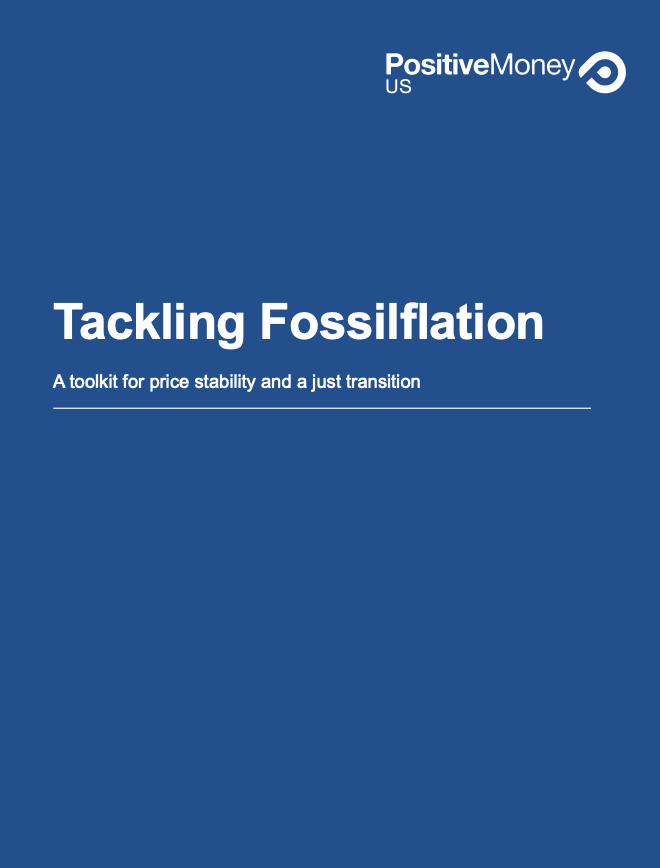After two years of a public health crisis, the war in Ukraine, and skyrocketing energy and food prices, concern about inflation is dominating U.S. media headlines and the political agenda. Interest rate hikes are now underway and considered the “common sense” response to inflation by the government and Fed.
This solution causes further harm to already struggling workers and families by raising unemployment, and potentially triggering a global recession. Still, for decades, rate hikes have been the conventional approach to maintaining price stability.
KEY FINDINGS
- Fossil fuel driven inflation or “fossilflation” is a major driver of price instability. Fossil fuel prices are volatile, and especially vulnerable to geopolitical factors and speculation. This volatility has direct and indirect effects on inflation, as energy is an essential input across economic sectors. Transitioning to renewable energy will help lower household energy costs, and foster long-term price stability, economic resilience and inclusive social well-being.
- A failure to keep warming below 1.5°C will increase future inflation risk. Climate driven weather disasters erode infrastructure and supply chains, impact food production, and reduce worker productivity. These disruptions will drive higher prices as the scale and frequency of extreme weather increase.
- Interest rate hikes are a blunt tool to tackle current inflation that will instead cause social harm and could delay the green transition. Rate hikes will not address fossilflation, corporate profiteering or any of the supply-side causes of inflation.
This report argues for a bold new approach to addressing inflation. It recommends specific monetary and fiscal policies that tackle price instability in a way that helps usher in a more resilient and equitable economic system:
KEY RECOMMENDATIONS
- Leveraging fiscal policy as part of a full employment and price stability agenda. Expand public investments in housing retrofits, healthcare, energy efficiency, research and development, regenerative agriculture and renewable energy to strengthen social and ecological infrastructure and bring about lower costs through agendas like Build Back Better, Medicare for All, a Federal Job Guarantee, or a Green New Deal.
- Implementing a new green monetary policy framework by replacing interest rate tinkering with mission-oriented qualitative and quantitative credit regulations that shift resource use away from unsustainable or socially damaging applications. The Fed can further introduce higher capital requirements to disincentivize fossil fuel lending by banks, and implement a green lending scheme to accelerate the energy transition and complement the core fiscal responses.
- Introducing an Inter-Agency Council on Price Stability to share responsibility and strengthen coordination and communication across government and improve the public sector’s administrative capacity.
More immediate measures include:
- Providing immediate cost relief and mitigating profit-spirals by using targeted price controls, expanding healthcare, moving towards antitrust reform, and passing the Protecting the Right to Organize Act to strengthen the labor movement.
- Strengthening essential goods and services sectors with free public transportation, support for farmworkers, and a consumption savings strategy.
Inflation impacts everyone but it takes a particularly harsh toll on low-income and frontline communities, already bearing a disproportionate burden from the pandemic and the climate crisis. Interest rate hikes will only increase that burden, making mortgages unaffordable, raising unemployment and stalling much needed investment. To tackle current inflation without causing further harm, we need a new approach to price stability — one that puts the needs of workers, families and communities first.
